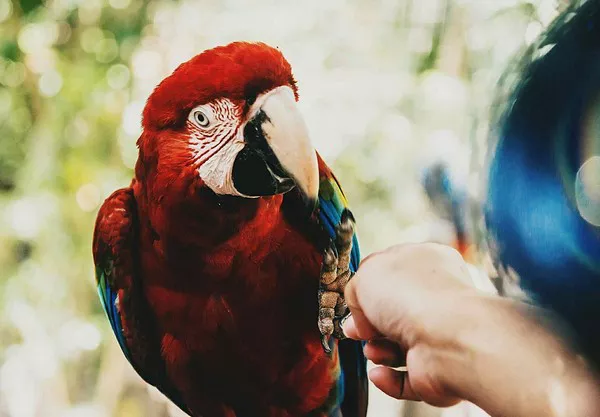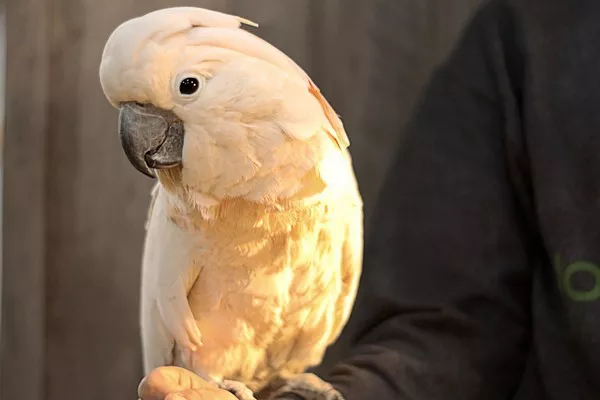Cats come in a variety of shapes, sizes, colors, and patterns, which makes identifying their breed and color characteristics a fascinating pursuit for cat lovers. One such color pattern that often piques interest is the tortoiseshell pattern, also known as “tortie.” These cats are famous for their beautiful, multicolored coats that look like the shell of a tortoise, combining rich shades of orange, black, brown, and cream. But how do you know if your cat is truly a tortoiseshell?
In this article, we’ll guide you through understanding what a tortoiseshell cat is, the physical traits that define them, and how you can identify a tortie in your own pet. We will also look at the different types of tortoiseshell patterns and the traits that set them apart from other cat colors and patterns.
1. Understanding Tortoiseshell Cats
The term “tortoiseshell” refers to the color pattern rather than a breed of cat. Tortoiseshell cats are not a specific breed; instead, they are cats that exhibit a particular color combination in their fur. The name “tortoiseshell” comes from the resemblance of their coats to the mottled, often dark patterns seen on a tortoise shell. These cats usually have a mix of black or dark brown fur with patches or spots of orange, red, and sometimes cream or gold.
Tortoiseshell cats are generally associated with having a “calico” appearance, though there is a difference between the two patterns. The tortoiseshell pattern is characterized by the mix of darker colors and fewer distinct patches compared to the more distinct blocks of white, orange, and black seen in calico cats.
2. What Makes a Tortoiseshell Cat?
The tortoiseshell color pattern is genetically determined. It is linked to the X chromosome, which is why tortoiseshell cats are predominantly female. Here’s a more in-depth look at the genetics:
X Chromosome and Color: The gene responsible for the tortoiseshell coat color is located on the X chromosome. Since females have two X chromosomes, they can inherit one color gene from each parent, resulting in a combination of orange and black fur. On the other hand, male cats have only one X chromosome and one Y chromosome. As a result, male cats are less likely to have the tortoiseshell coat because they would need both a black and an orange gene, which is rare in males.
Rare Male Tortoiseshell Cats: While extremely rare, male tortoiseshell cats do exist. These cats often have a genetic anomaly, such as Klinefelter syndrome (XXY), which causes them to have two X chromosomes and one Y chromosome, giving them the ability to inherit both black and orange color genes. However, male tortoiseshell cats are often sterile.
3. How to Identify a Tortoiseshell Cat
Identifying a tortoiseshell cat can be relatively easy once you know what to look for. Tortoiseshell cats are defined by the color and pattern of their coats. Here are the key traits to help you identify a tortie:
Color Palette
The most obvious feature of a tortoiseshell cat is its color combination. Tortoiseshell cats typically have a coat that is made up of a combination of black, brown, orange, and sometimes cream or gold. These colors are not arranged in distinct patches or blocks (as in the case of calicos), but are instead intermingled, giving the coat a mottled, “patchy” appearance.
Black and Brown: The darker colors in a tortoiseshell cat’s coat are usually black or brown. These darker shades are most prominent around the cat’s back and sides.
Orange and Red: The lighter, warmer shades of the coat are usually orange or red. These may appear in patches across the cat’s body, often mixed with the darker black and brown hues.
Cream or Gold: In some tortoiseshell cats, you may also see lighter shades such as cream, gold, or even yellow interspersed in the pattern. These colors may appear as highlights or subtle variations throughout the coat.
No White Fur
Unlike calico cats, who have distinct white patches in their coats, tortoiseshell cats typically do not have any white fur. If you notice significant white fur on your cat, it is likely not a tortoiseshell.
Blotchy or Marbled Appearance
The distinctive feature of a tortoiseshell coat is that the colors do not follow any clear lines or patterns. Instead, the colors are scattered in a way that resembles a blotchy or marbled look. The mix of colors can vary significantly from cat to cat, which is why no two tortoiseshell cats are identical in appearance.
Coat Length
Tortoiseshell cats can have either long or short fur, depending on their breed or genetics. Some tortoiseshell cats are long-haired (often referred to as “tortoiseshell Persians”), while others are short-haired. The length of the fur does not affect the color pattern, but it may make it harder to see the full effect of the tortoiseshell pattern, especially in long-haired cats.
Tabby Tortoiseshell Cats
A tabby tortoiseshell cat is one that has a tortoiseshell coat pattern combined with tabby markings. Tabby markings, such as stripes or swirls, are often visible under the multicolored fur. Tabby tortoiseshells may have a more distinctive pattern, as the tabby markings create an additional layer to the tortoiseshell appearance.
4. Variations of Tortoiseshell Cats
While all tortoiseshell cats share the same basic color palette, there are different variations within the tortoiseshell pattern. These variations are due to the mixing of different colors in different proportions. Let’s look at a few common variations:
Dilute Tortoiseshell
A dilute tortoiseshell cat has a softer, muted color pattern. Instead of the standard black, brown, and orange, the dilute tortie will have blue (a diluted version of black), gray (a diluted version of brown), and cream (a diluted version of orange). These cats often have a more pastel-like appearance and are commonly found in long-haired breeds.
Tortoiseshell with White (Torbic)
A variation of the tortoiseshell pattern includes white fur mixed in. These cats are known as “torbies.” In a torbie, the white fur may appear as small patches on the belly, paws, or chest, or it could be scattered across the coat in varying amounts. While the overall look still follows the tortoiseshell pattern, the white accents give it a more distinct, piebald appearance.
5. Tortoiseshell Cat Personality
While the tortoiseshell pattern is primarily related to color, some cat owners report noticing certain personality traits associated with tortoiseshell cats. These traits may not be universally applicable to all tortoiseshell cats, but they are worth mentioning due to their prevalence among torties. Many tortoiseshell cats are said to be:
Independent: Tortoiseshell cats are often described as having a more independent and assertive personality compared to other cats. They may prefer to do things on their own terms and are less likely to tolerate unwanted attention.
Feisty and Playful: Many tortoiseshell cats are lively and curious, enjoying interactive play and exploring their environment. Their feisty nature can also lead to moments of sassy behavior, such as swatting or hissing when they’re feeling annoyed.
Loyal and Affectionate: Despite their independent streak, tortoiseshell cats can be very loyal and affectionate toward their owners. They may form close bonds and enjoy curling up for cuddles, but they often prefer to initiate affection on their own terms.
6. Common Breeds that Can Have a Tortoiseshell Coat
Several cat breeds are known for having the tortoiseshell pattern, and the most common breeds that exhibit tortoiseshell colors include:
American Shorthair: This popular breed often has tortoiseshell coat patterns, especially in females. Their short, easy-to-maintain coats are a great match for tortoiseshell markings.
Persian: Persian cats with a tortoiseshell coat have long, luxurious fur that showcases the pattern beautifully. The long-haired tortoiseshell Persians are often called “tortoiseshell Persian” or “Himalayan tortoiseshell.”
British Shorthair: The British Shorthair, with its round face and dense, plush coat, can also feature the tortoiseshell pattern, giving these cats an elegant and regal appearance.
Maine Coon: This large, fluffy breed can also exhibit tortoiseshell coloration, often mixed with tabby stripes for a unique look.
Conclusion
Tortoiseshell cats are captivating and unique in their appearance, combining rich, mottled colors that give them a shell-like look. These cats are typically female and are identified by their patchy coat, which contains a mix of orange, black, and sometimes cream or gold colors. Though there are variations in the tortoiseshell pattern, the main defining feature is the blending of colors, with no distinct lines or blocks. While tortoiseshell cats are known for their distinctive appearance, they also tend to have a feisty, independent personality that sets them apart.
Now that you know what makes a cat a tortoiseshell, you can confidently identify whether your cat has this lovely color pattern. Remember, the beauty of tortoiseshell cats lies in their individuality — no two are ever the same.
Related Topics:























